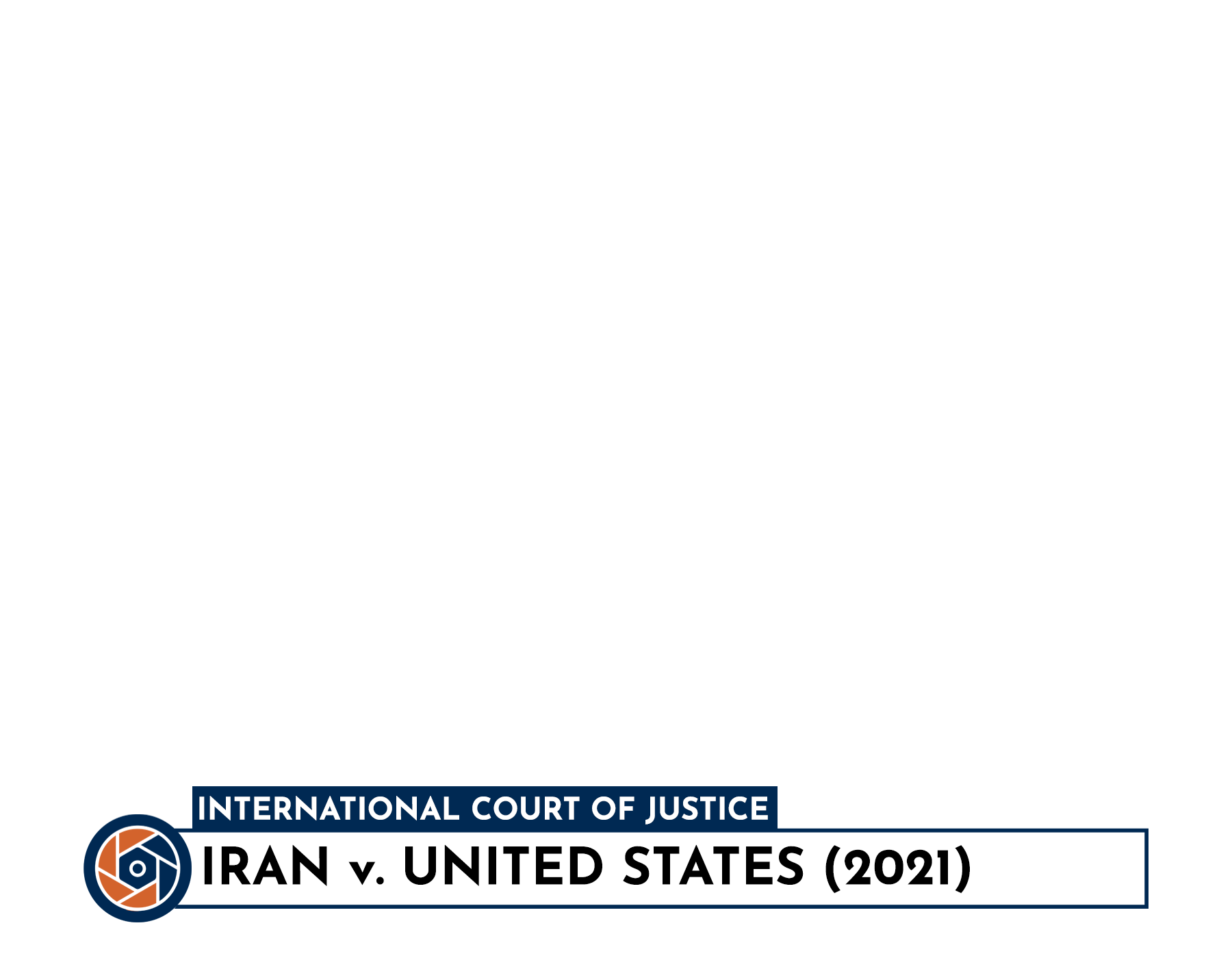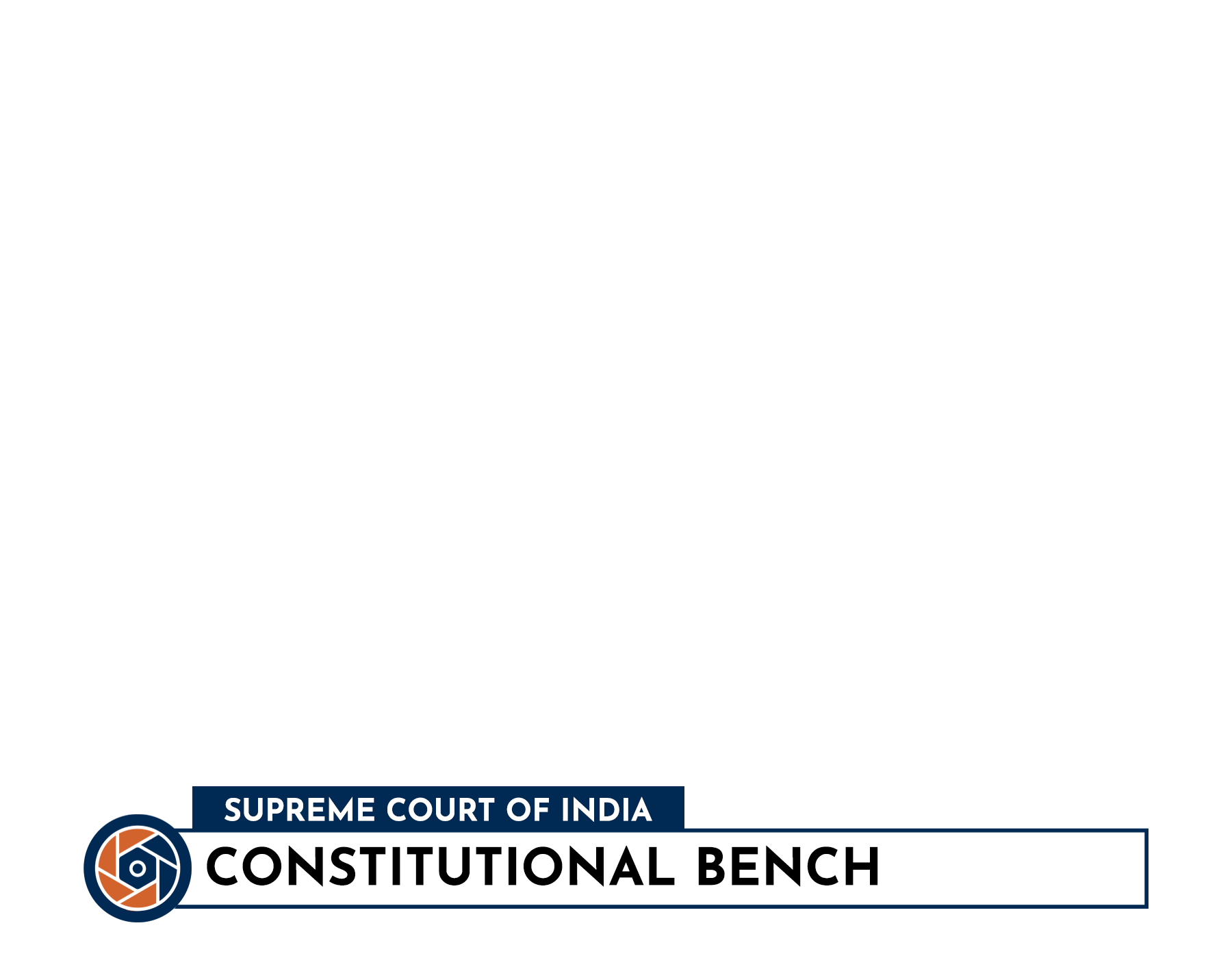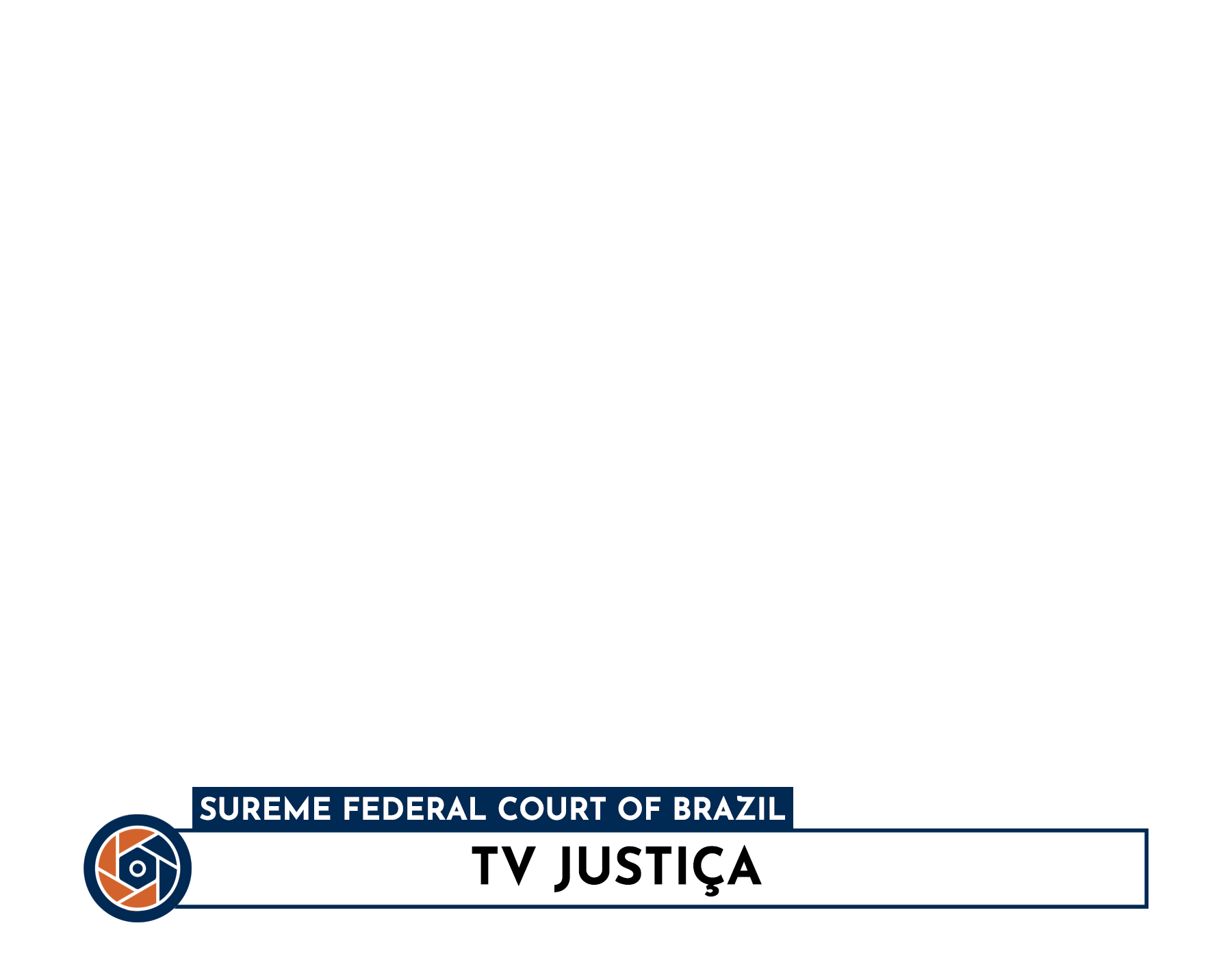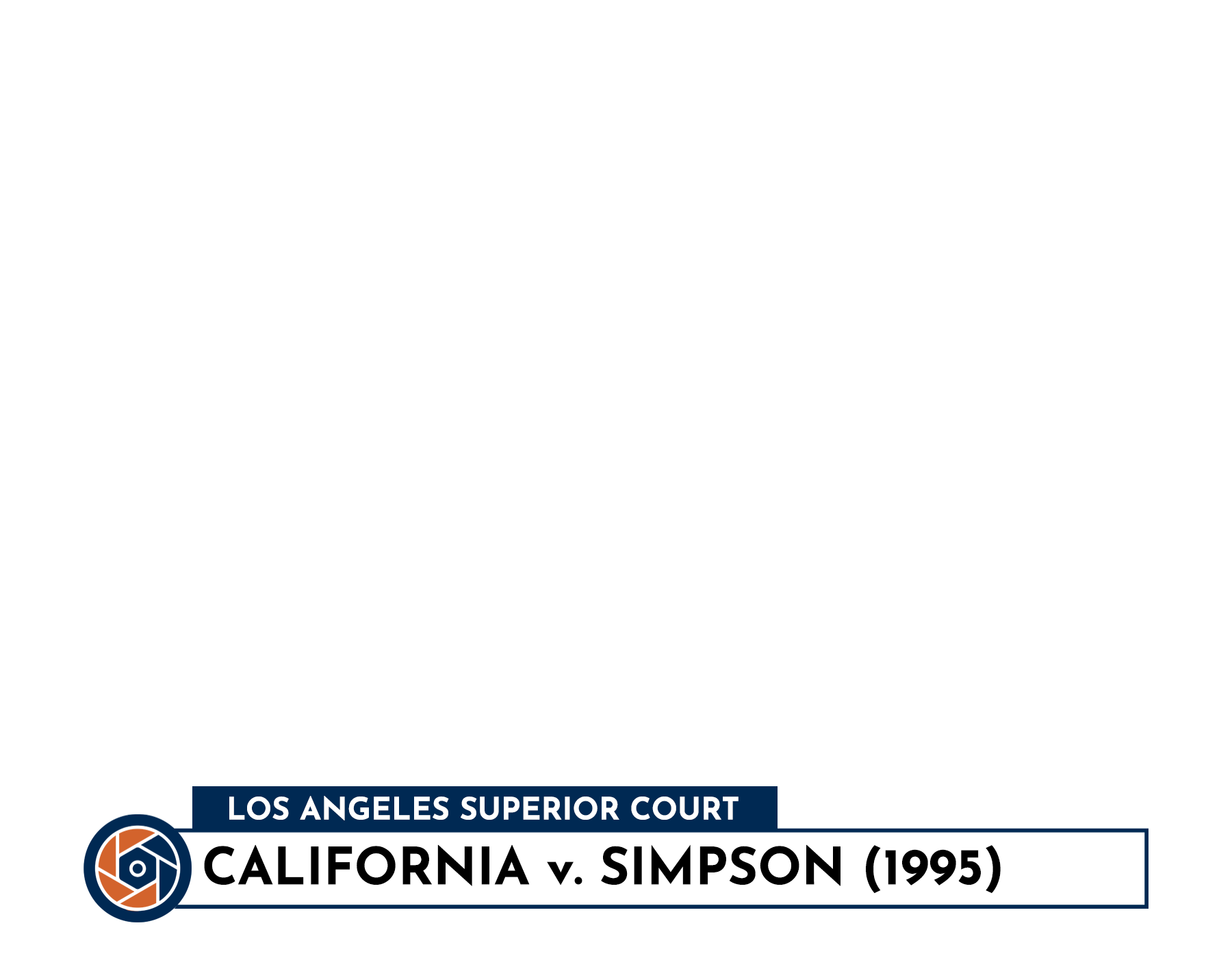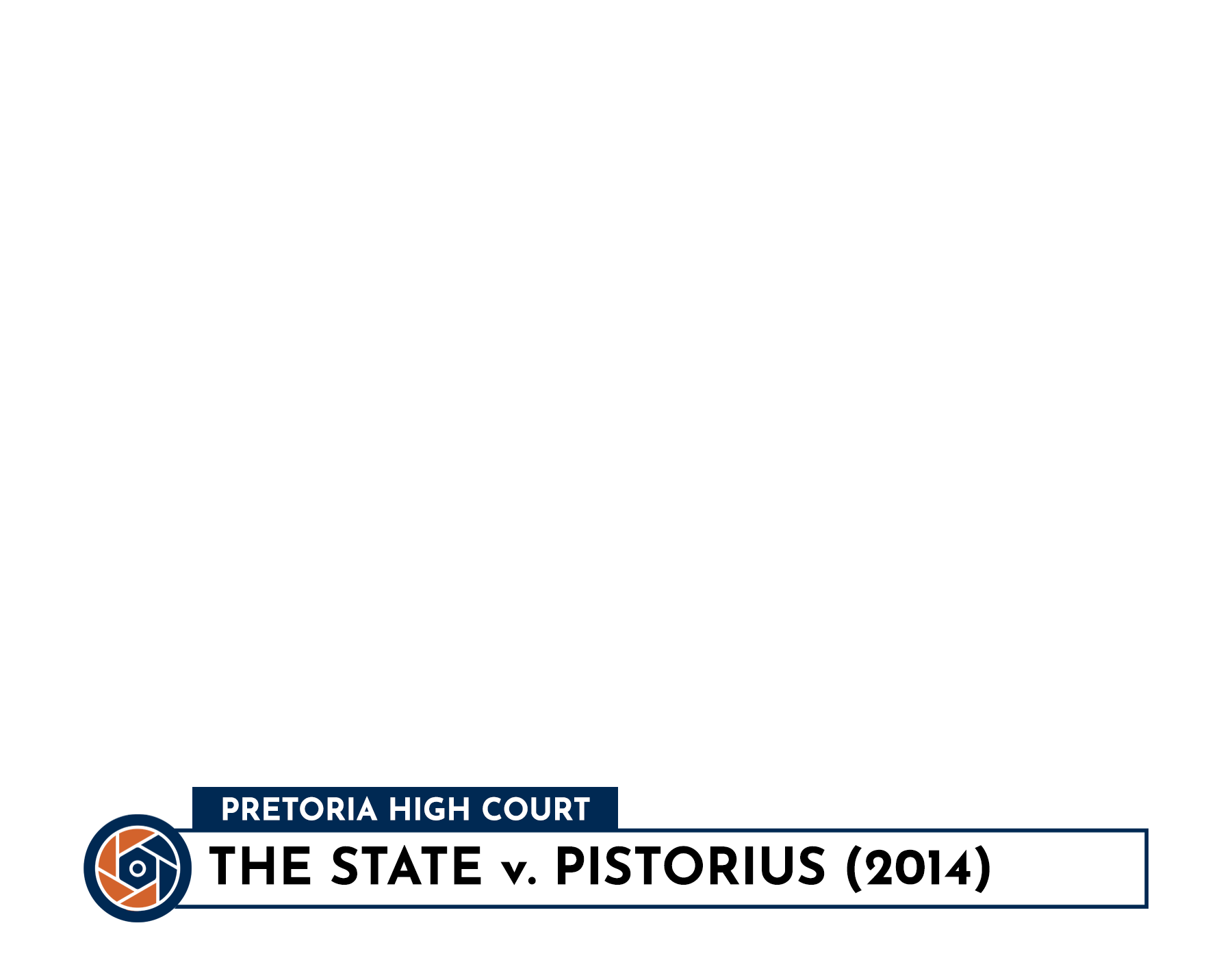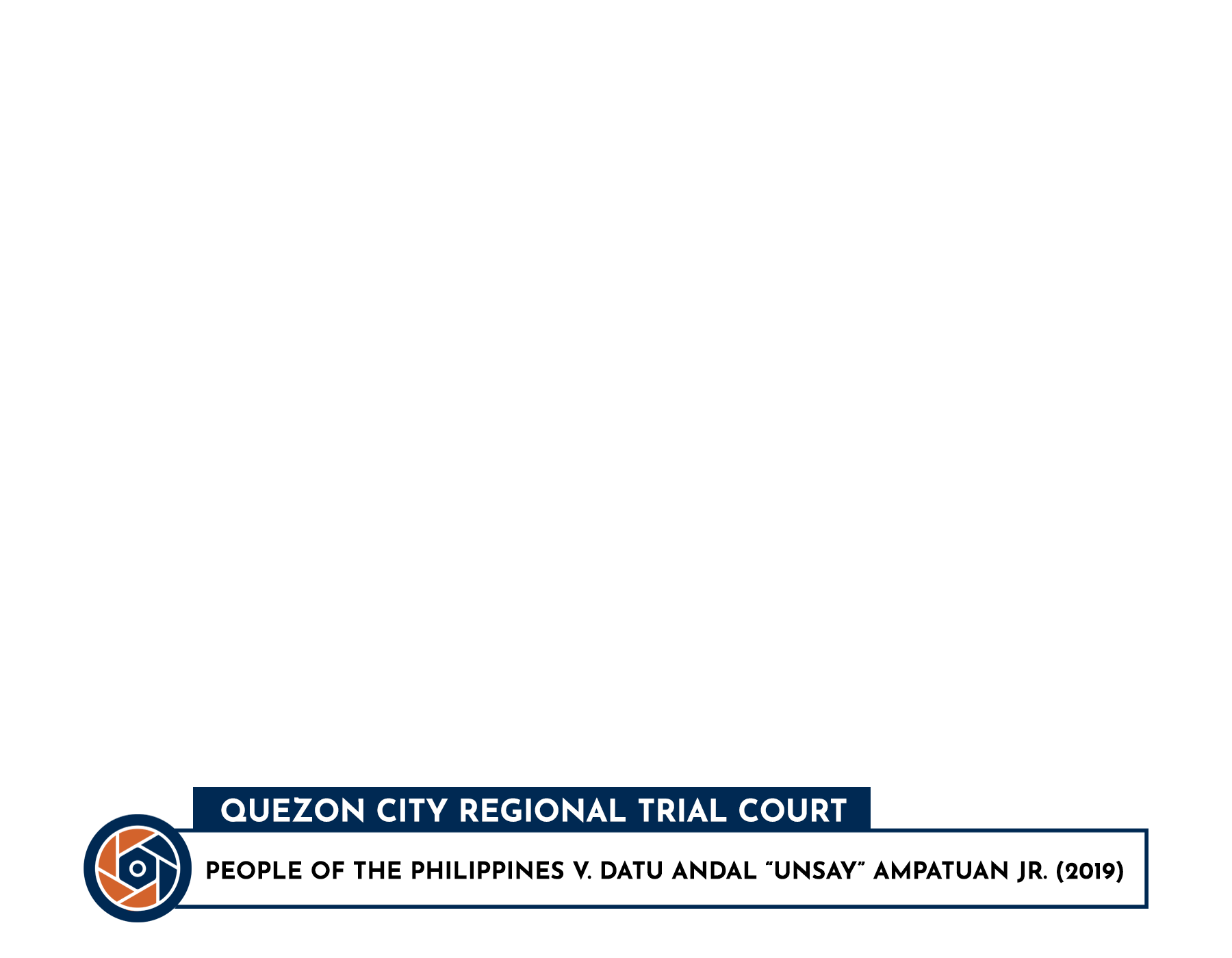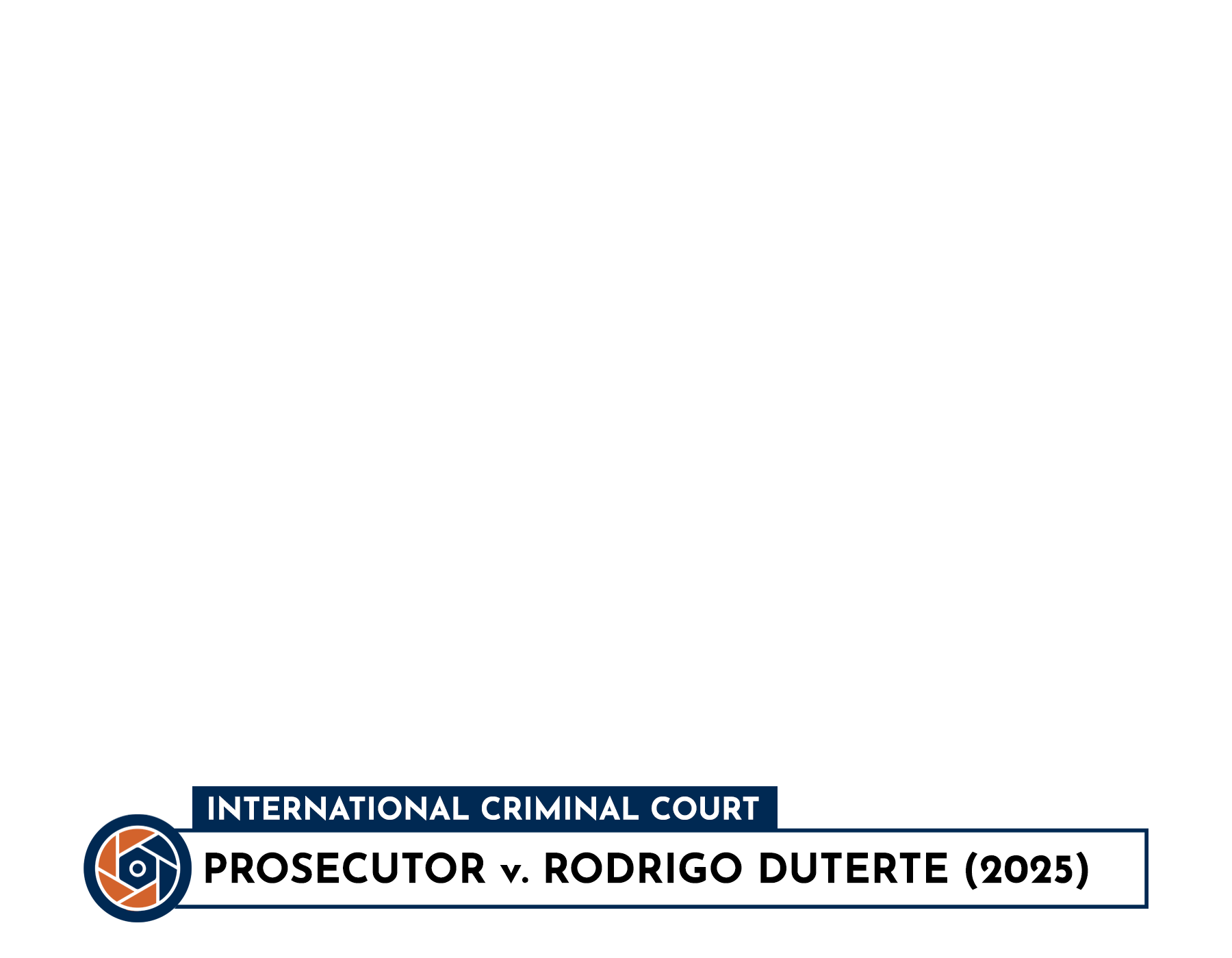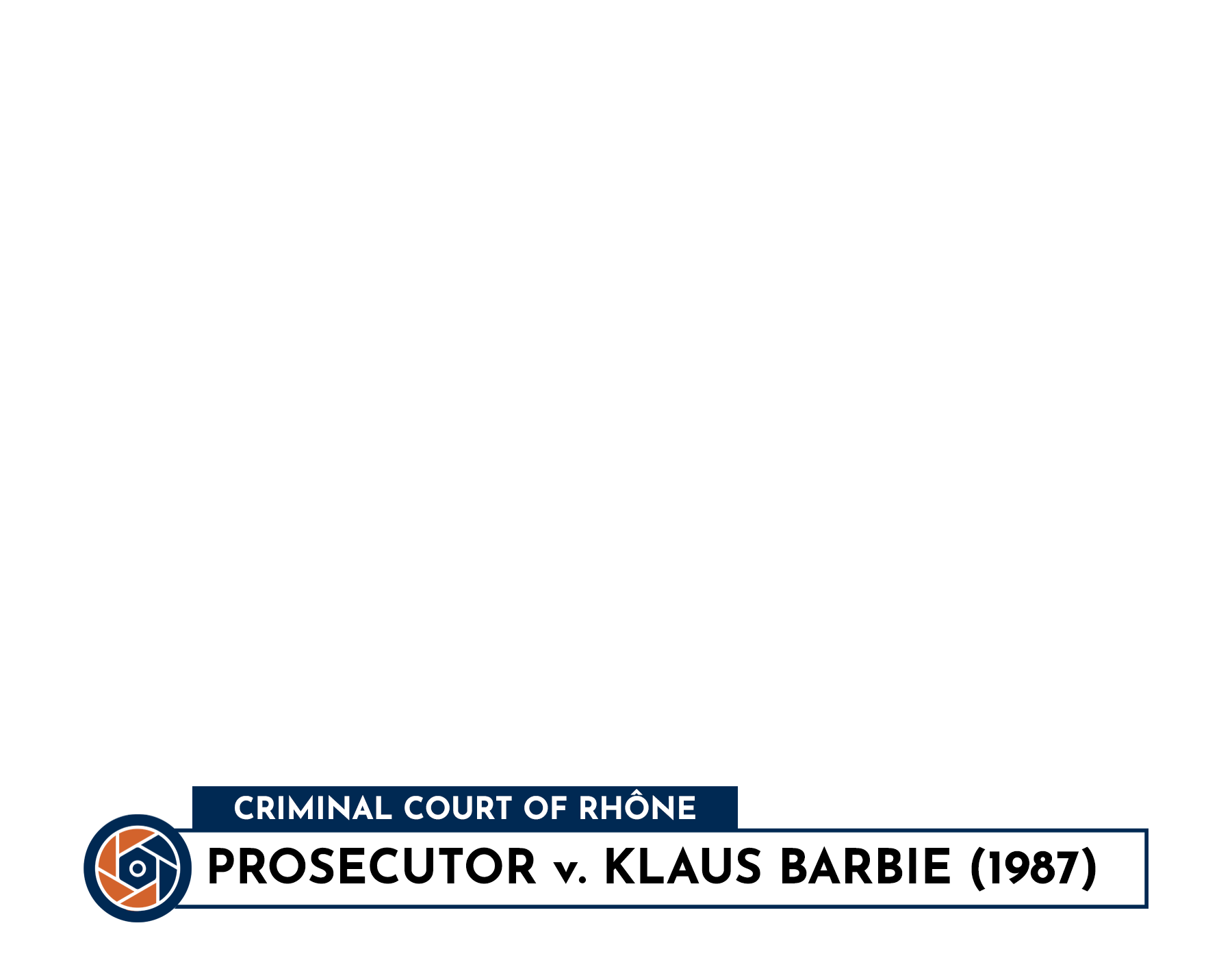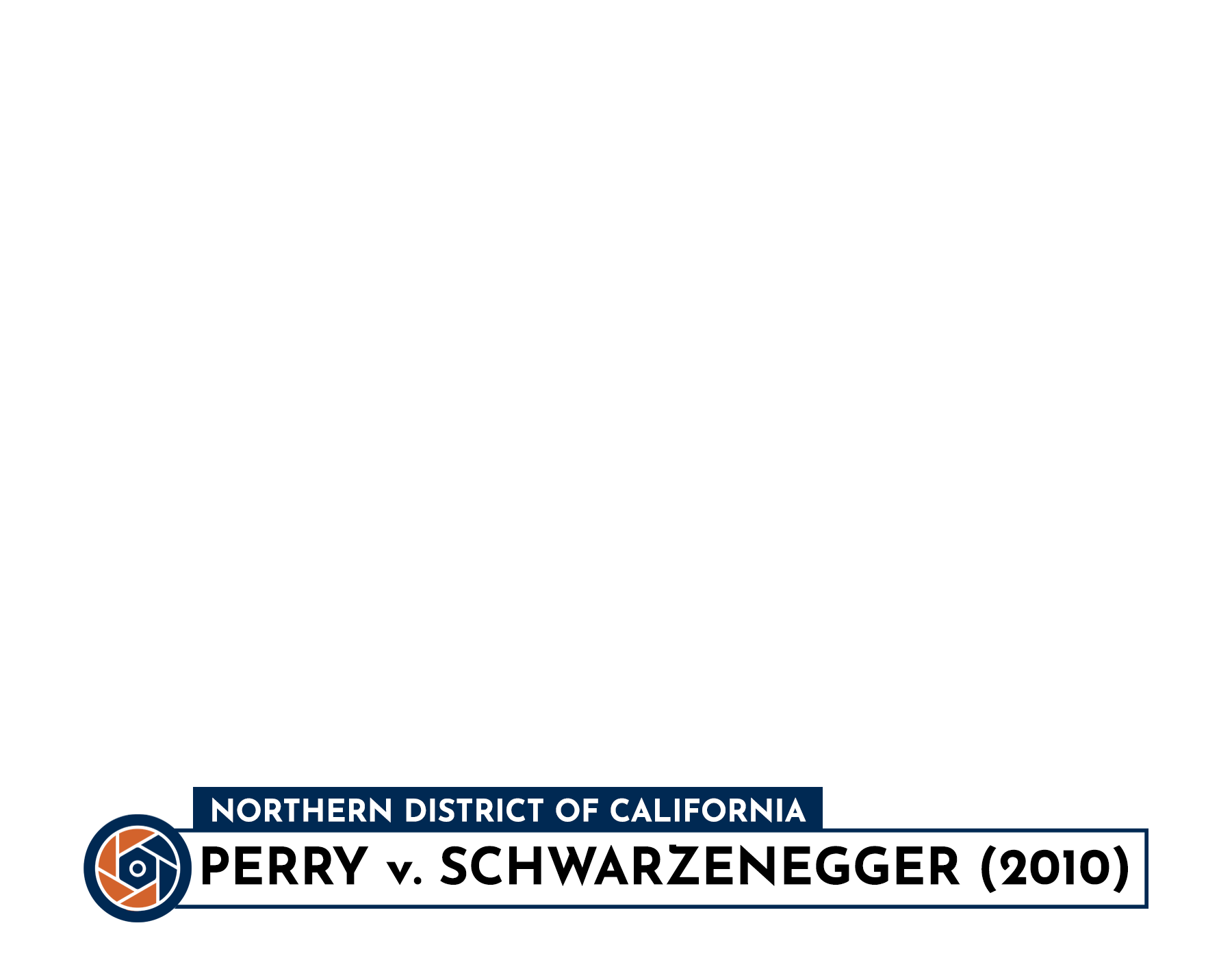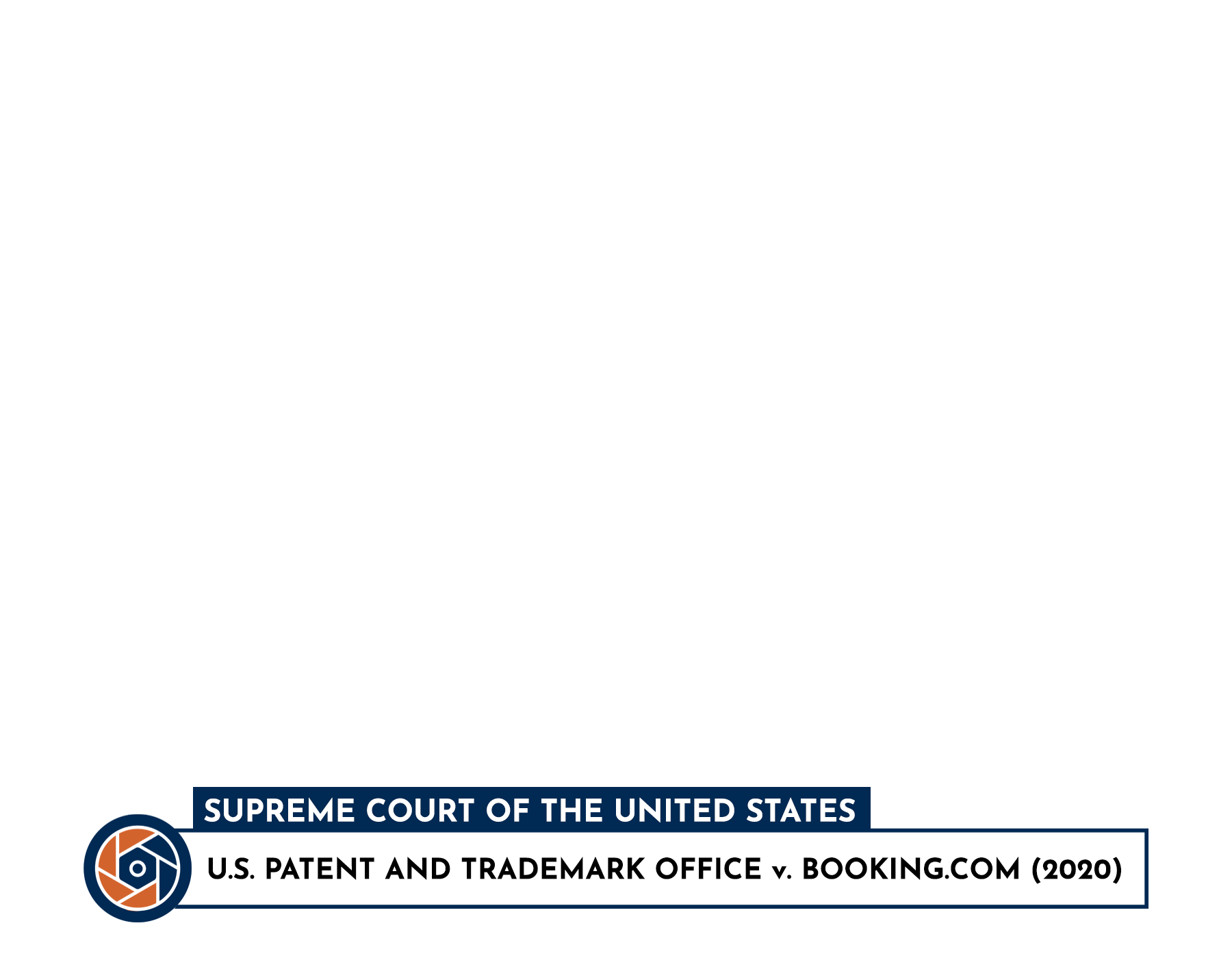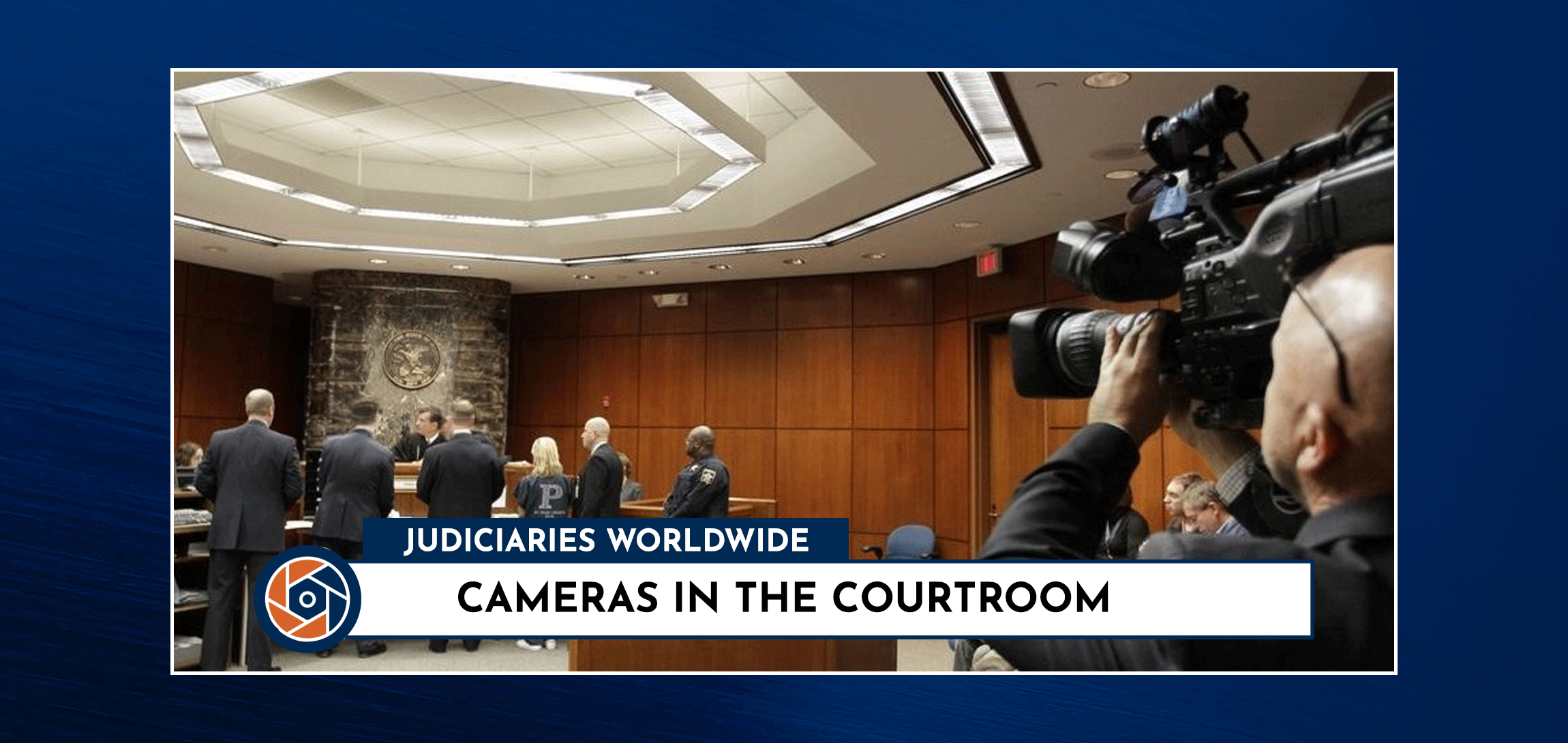
In a 1913 Harper’s Weekly article, United States Supreme Court Justice Louis D. Brandeis wrote, “Sunlight is the best of disinfectants; electric light the most efficient policeman.” Sunlight has become a symbol for “open justice” – the idea that transparency enables accountability. The advent of the internet and social media has profoundly shaped expectations about the accessibility of government institutions, including the courts. Many court systems now make written transcripts or audio recordings of court proceedings available to the public. With growing interest in observing the litigation process in ‘real time,’ some countries have developed protocols for cameras in the courtroom that seek to accommodate calls for transparency while protecting the privacy interests of litigants and minimizing potential disruptions. This piece will explore the three most common models for cameras in the courtroom: real-time coverage, limited or delayed broadcast, and prohibition.
Real-Time Coverage
Only a few courts around the world provide real-time video coverage of all public proceedings, all either international tribunals or apex courts. For example, the International Court of Justice provides full-coverage livestreams of its public proceedings as well as video archives. The public may access these services on the United Nations’ online platform, UN Web TV, and YouTube.
Viral Justice
The most-watched International Court of Justice (ICJ) proceeding on YouTube—garnering over one million views—features the 2018 case Iran v. United States. Litigation was precipitated by the United States withdrawal from the Joint Comprehensive Plan of Action (the Iran Nuclear Deal) and its subsequent re-imposition of economic sanctions on Iran. In 2023, another ICJ case “went viral” when South Africa alleged that Israel was committing genocide in Gaza. Oral arguments were livestreamed and re-posted on Instagram, TikTok, and X, attracting over one million views on YouTube alone.
National courts that livestream all public proceedings include the Supreme Court of the United Kingdom, the Supreme Court of Canada, and the Constitutional Court of South Africa.
In 1961, before Israel had a national television service, the trial of Adolf Eichmann was broadcast live around the world. Audio was available on Israeli public radio and a video feed was made available in a public theater in Jerusalem. However the Israeli judiciary has broadcast very few court proceedings since, despite guidelines for cameras in the courtroom promulgated in 2004. In April 2020, Israel’s High Court of Justice announced a pilot project to livestream select hearings. Its first broadcast (related to pandemic regulations) was accessed by approximately one million viewers.
Broadcast vs. Livestream
Both the broadcast of video recordings and livestreaming transmit audiovisual content. They differ in medium and the degree to which they enable audience engagement. Broadcasting relies on traditional and more static infrastructure, such as radio and television. Livestreaming occurs over the internet through platforms that allow viewers to comment and react in real time.
In 2018, the Supreme Court of Uzbekistan launched a new website with livestream features. The site was created with assistance from the United Nations Development Program and the United States Agency for International Development. A pilot program enables website visitors to watch cases from twelve participating trial courts. These video recordings are also available on an online archive.
The Supreme Court of Norway began livestreaming proceedings in 2023. Under its new policy, livestreaming is permitted when “there are no restrictions on public disclosure of the hearing, and privacy and other considerations do not speak decisively against it.” However, the Court does not make available an archive of recordings on its website.
Judicial Deliberations
Courts that broadcast proceedings typically limit camera access to oral arguments and the announcement of judgements. However, the apex courts in Brazil and Mexico livestream judicial deliberations, providing the public a window into the decision-making process.
In Brazil, plenary sessions of the Supreme Federal Court of Brazil take place after oral argument: the justices convene as a full bench, the court’s rapporteur calls a case for discussion, and each justice reads their individual preliminary opinion. In 2002, the Court became the first to allow the public to observe the deliberations process and offer a livestream on YouTube and the court’s cable channel, TV Justiça. Justices may revise their opinions after deliberations and a final judgment is released online. The Supreme Court of Mexico began televising judicial deliberations in 2005, adopting a practice similar to Brazil’s. The Court Rapporteur presents the case, followed by a discussion among the justices; when their deliberations conclude, a vote is taken.
Proponents of livestreaming deliberations note its potential for enhancing transparency and the public’s understanding of the rule of law. Critics argue that it undermines institutional integrity, the sanctity of the decision-making process, and judicial independence and also note that media presence may influence deliberations and the final judgment.
Limited or Delayed Broadcast
Conditions on Coverage
Media coverage, whether livestreamed or delayed, poses more challenges for first instance proceedings where privacy interests and fair trial rights are more immediate. Courts around the world generally prohibit media coverage of criminal trials, but some allow limited media access. Requests for cameras in the courtroom for both civil and criminal cases are reviewed on a case-by-case basis; courts may choose to delay the release of video recordings or release only excerpts. Policies delaying or limiting coverage are crafted to protect fair trial rights and litigant privacy.
In the United States, a majority of state courts permit cameras in the courtroom with prior notice and permission of the judge. For example, Alabama’s Canons of Judicial Ethics and Supreme Court rules allow broadcast of first instance and appellate proceedings with permission from the Supreme Court of Alabama. The lower court is responsible for developing a media coverage plan outlining proposed guidelines, including the number of cameras, their placement, and which parties (including witnesses) may or may not be filmed. Once the plan is approved by the Supreme Court, the judge presiding over the trial may allow camera access with written consent from participating parties and counsel. In California, court rules require the media to submit a form requesting permission to broadcast and cover any related costs incurred by the court. The form must be submitted five days prior to the proceedings and list the type of media that will be used (i.e., video camera, still camera, motion picture camera, or audio).
California v. Simpson
The 1995 murder trial of O.J. Simpson is one of the most well-known criminal proceedings broadcast around the world. An estimated 150 million people tuned in to watch the jury’s verdict. Multiple media outlets extensively covered the case, often with hours of legal commentary that spawned a new era of “Court TV.” After a series of media mishaps – including the accidental broadcast of an alternate juror’s face – the presiding judge imposed conditions on television coverage mid-trial. The frenzy generated by the O.J. Simpson case influenced cameras-in-the-courtroom polices across the United States and led many jurisdictions to tighten restrictions.
South Africa’s judiciary permits the broadcast of criminal trials on a case-by-case basis. In 2013, former South African Paralympic track star, Oscar Pistorius, was convicted of murdering his girlfriend. When national news outlets petitioned to cover the trial using audio-video recording and photography, the defendant’s legal team opposed the request, arguing that it would violate his right to a fair trial. In its analysis, the High Court of South Africa addressed the competing constitutional rights at stake as well as the inherent power of the judiciary to regulate its own procedures. The court concluded that the importance of open justice militated in favor of permitting media coverage and required the implementation of safeguards to protect the interests of the accused. A few years later, in Van Breda v. Media 24 Ltd., South Africa’s Supreme Court of Appeal affirmed the judiciary’s authority to authorize audiovisual broadcast of high-profile criminal and civil proceedings on a case-by-case basis. The court concluded that a categorical bar to media coverage violates freedom of the press and noted that media access facilitates public oversight of the judiciary.
In 2017, the Supreme Court of Korea adopted a rule allowing the broadcast of verdict hearings in major trials. The presiding judge has discretion over whether to grant camera access. Consent of the accused is not required if the court concludes that live streaming serves the public interest. Although Germany prohibits media coverage of proceedings in its lower courts, judgments issued by the Federal Constitutional Court may be videotaped or broadcast unless the court determines that it is not in the interests of justice.
Regulations promulgated by the Supreme People’s Court of China allow the people’s courts to broadcast high-profile or legally significant cases. However, courts may not permit broadcasting in certain criminal cases, as well as those involving national or trade secrets and juveniles.
In 2011, the United States federal judiciary implemented a four-year pilot program and installed cameras in fourteen first instance courts across the nation to record (not livestream) proceedings. This program was designed to assess the implementation of a centralized but adaptable video-recording policy in the federal courts and its impact on judges and lawyers. Participation in the pilot program was voluntary and limited to civil cases. The Federal Judicial Center was asked to conduct a study of the pilot. The Center’s report noted that “over 70% of judges and attorneys who participated in video recording of a proceeding greatly or somewhat favor video recording of courtroom proceedings. Of judges who did not participate, 79% greatly or somewhat oppose video recording.” After the study concluded, the U.S. federal courts retained a general prohibition of cameras in the courtroom, concluding that “the pilot program did not produce sufficient or persuasive evidence of a benefit to the judiciary to justify the negative effect upon witnesses and/or the significant equipment and personnel costs associated with video recordings of district court civil proceedings.” However, three district courts from the original study continue to allow cameras in the courtroom for selected cases as part of a project to collect long term data on the practice.
Delayed or Limited Release
Some courts delay or limit access to video recordings of court proceedings. For example, the International Criminal Court posts videos thirty minutes after hearings conclude. This practice provides time for court administrators to redact sensitive or confidential information. The European Court of Human Rights also delays video release. Recordings conducted in the morning are released in the afternoon, while hearings in the afternoon are posted in the evening. The court’s proceedings are held in English with French interpretation; delayed release enables interpreters to check the accuracy of the translation.
The Court of Justice of the European Union employs different broadcasting practices depending on the type of proceeding. The delivery of all judgements is broadcast live on the Court’s webpage. However, the proceedings in select high-profile cases are broadcast with a delay. The court makes video recordings available on its website for one month after a hearing concludes.
Prohibition
While many judicial systems around the world are experimenting with different degrees of media access to court proceedings, some continue to prohibit cameras in the courtroom. Although the constitution of Japan provides for public access to court proceedings, the Japanese judiciary does not permit media access. Courtroom artists may sketch defendants during proceedings, but the images of judges may be recorded only before proceedings commence.
Egyptian trial courts also have strict camera prohibitions. In 2017, Egypt’s Supreme Judicial Council banned photography and videotaping during trials, concluding that the dissemination of photos and videos from trials in the news damaged the prestige of the judiciary and endangered defendants.
Norway’s courts do not permit video recording of criminal proceedings. The media inside the courtroom is prohibited from photographing or recording during trial. Reporters covering court proceedings from a press room are not permitted to transmit this coverage. Media stationed outside the courtroom cannot capture images or video of defendants entering or exiting the courtroom without their consent.

